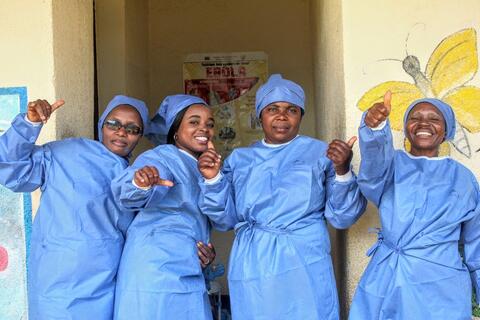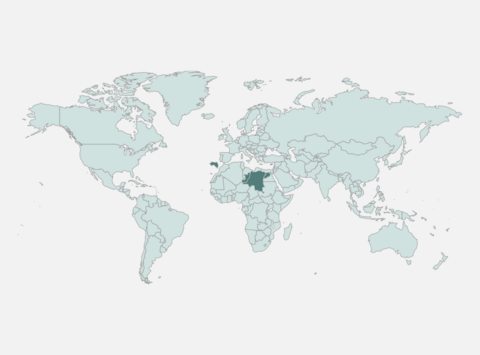Mpox is a Notifiable Medical Condition (NMC) in South Africa (SA), and it is a legal requirement for immediate notification via the national electronic NMC surveillance system upon clinical suspicion based on case definitions adapted from WHO1 – a suspected case is any patient with unexplained acute skin rash, mucosal lesions, or lymphadenopathy. In addition, specimens for laboratory testing are collected and submitted to laboratories in SA providing the testing. The Special Viral Pathogens Labora- tory (SVPL) of the Centre for Emerging Zoonotic and Parasitic Diseases at the National Institute for Communi- cable Disease (NICD) serves as the national reference laboratory for mpox diagnostic testing and sequencing and maintains their own linelist, separate to the NMC. Between May and September 2024, SA recorded 25 confir- med mpox cases. All cases were male and most identified as men who have sex with men (MSM), a key population (KP)2 with median age of 35 years (IQR 28-38). Only one case reported a travel history outside of SA in a time frame which would link the travel to the time of exposure to MPXV, whilst other cases reported no travel outside of SA, which points to local transmission of the virus (Figure 1). The lack of a unique patient identifier poses a challenge for the linkage of cases notified to the NMC and specimens tested at the reference laboratory.
Confirmed mpox laboratory cases were manually captured onto the NMC system for harmonisation and dashboarding, accounting for most of the linked cases. Only positive cases identified by private labs are sent to SVPL for further characterisation and no negative test data was available for suspected mpox cases from private sector laboratories, however the private sector only services <20% of the population. Although a high proportion of men-who-have-sex-with-men (MSM) are reported among mpox cases worldwide, sexual practices are not collected among suspected cases, only the astute clinician may suspect mpox among MSM presenting with prodromal symptoms and maculopapular rash. Due to stigma, risky sexual practices among MSM may not be disclosed in South African health facilities3.
A retrospective data analysis was conducted to review the overlap and compare between suspected mpox cases notified via the NMC system and specimens submitted to the special viral pathogens lab. The two datasets (NMC vsspecimens submitted) were linked and compared. In the absence of a reliable unique identifier in these data, NMC and laboratory testing lists were linked via a “fuzzy match” using the mean Jaro-Winkler score of >0.81 across first names, surnames, age and sex via the RecordLinkage package in R4,5.
Between 1 January and 30 August 2024, 720 specimens were submitted for laboratory testing, representing a low test-positivity of 3.5% (25/720), and 287 clinically suspected mpox cases were notified via the NMC system. Through linkage, we revealed that only 31 (6%) suspected cases were recorded in both systems. The median age of suspected cases in both the laboratory and clinical notifications databases were the same (26 years, IQR 16-37). Confirmed mpox cases were on average ten years older than suspected cases in the laboratory data (p< 0.05). Men comprised 64% of notified cases and 63% of submitted specimens, but 100% of confirmed cases. There were no extended periods where no notifications or specimens were submitted; however, among all confirmed cases, gaps of more than the mean incubation period of 21 days were observed between consecutive confirmed cases.
The low test-positivity of specimens submitted for testing suggests a sensitive and broad application of the case definition. However, the discrepancies in age and sex of suspected cases and confirmed cases, indicates that suspicion in the MSM population aged 30-40, where transmission is likely6 , may be lacking - low index ofsuspicion is demonstrated by a case report of the first case of mpox in 20247. The gaps of more than the mean incubation period between consecutive confirmed cases suggests unobserved community transmission, perhaps a function of clinicians’ low index of suspicion despite the broad case definition. Additionally, suspected cases who had specimens collected and referred for testing were not concomitantly notified through the NMC system, and vice versa; not all who were notified had specimens submitted for testing.
Lesson learned:
Linking these datasets demonstrated that in South Africa a broad, or sensitive, case definition is useful when transmission appears low, however needs to be adapted according to the epidemiological information as the outbreak evolves. In the case of South Africa, the case definition for a suspected mpox case in this outbreak, although broad, seems not to have been applied to the population where transmission was likely. The role of stigma cannot be ignored, and key populations may not have disclosed high-risk behaviour affecting the clinician’s index of suspicion. In order to improve mpox surveillance in South Africa, several webinars were held for clinicians across the country to emphasize the clinical presentation of mpox and discuss the epidemiology of the outbreak. Risk communication and community engagement (RCCE) activities with key populations and Non-Governmental Organi- sation (NGO) stakeholders are also being implemented, including Rapid Qualitative Assessments (RQAs), which are an essential tool for bringing the community perspective into public health emergencies. Efforts are under way to integrate mpox surveillance into surveillance for HIV and STIs, including in clinics acting as sentinel sites for MSM. Who is notified and who has a specimen collected for testing ought to be closely monitored to ensure all who are suspected for mpox are tested and notified. The issue of a unique identifier is being addressed by the Department of Health through a Health Patient Registration System (HPRS) number. This is being implemented but was unavai- lable for the data analysed. Universal adoption of this number will allow for efficient horizontal linking across health data systems; until then, fuzzy matching practices could be used to link health data to inform public health action. Linking existing data sources may elucidate additio- nal risk factors with minimal duplication of work, allowing for improved and evolving formulation of the case-defini- tion. The case-definition in South Africa remains broad due to the potential introduction of clade I, however clinicians index of suspicion has been sharpened through webinars mentioned above. Implementing an outbreak case-defini- tion may be useful but may also create confusion in practice.


